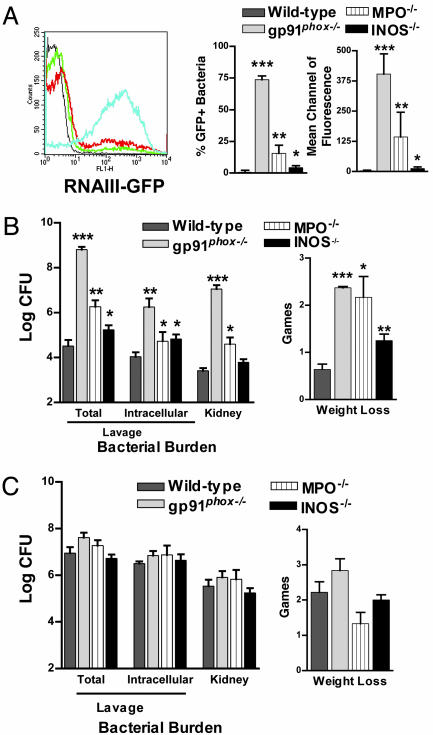Fig. 1.
Comparison of WT, gp91phox–/–, MPO–/–, and INOS–/– mice for in vivo RNAIII promoter activation, bacterial burden, and morbidity 24 h after infection with either quorum sensing-sufficient or -deficient S. aureus.(A and B)WT (n = 29), gp91phox–/– (n = 10), MPO–/– (n = 8), and INOS–/– (n = 8) mice infected with 2 × 107 WT[RNAIII-GFP] were compared for the magnitude of RNAIII promoter activation expressed by bacteria isolated from the pouch lavage (WT = black line; gp91phox–/– = blue line; MPO–/– = red line; INOS–/– = green line) (A) and for the total bacterial burden in the lavage, the intracellular viable bacteria in the lavage, the bacterial burden in the kidney, and weight loss (B). (C) WT (n = 24), gp91phox–/– (n = 8), MPO–/– (n = 7), and INOS–/– (n = 8) mice infected with 0.7–1.0 × 108 agr–[RNAIII-GFP] were compared for the total bacterial burden and the intracellular viable bacteria per ml of lavage, the bacterial burden in the kidney, and weight loss. In this model, there is no RNAIII promoter activation in the absence of agr (7). ***, P < 0.001; **, P < 0.01; *, P < 0.05.

